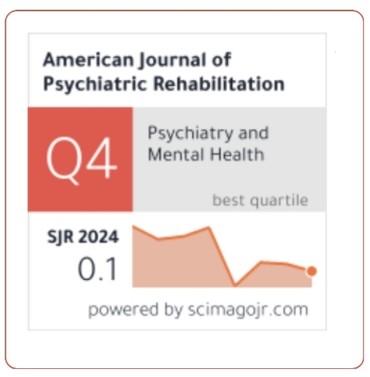Prescription Pattern of Analgesics for Pain Relief in Post-Operative Orthopedic Patients in Tch
DOI:
https://doi.org/10.69980/ajpr.v28i5.719Keywords:
Aceclofenac, diclofenac, tramadol, pain intensity scales, fractures.Abstract
Pain is defined as “an unpleasant sensory and emotional experience associated with actual or potential tissue damage or described in terms of such damage. Uncontrolled pain is a major impediment to post-operative functional recovery and is a persistent problem. Older adults who undergo lower extremity orthopaedic surgery (e.g., hip and knee arthroplasty, hip fracture repair) experience intense post-operative pain and are at risk for sub-optimal analgesic therapy. Higher pain levels following lower extremity orthopaedic surgery have been associated with increased lengths of stay, increased complications, delays in ambulation, impaired functional recovery, and increased suffering.
Aim: This main aim of the study is to assess the intensity of pain in patients in orthopaedic unit; and to describe the analgesia plan and drugs used.
Objectives:
- Prescribing trends of analgesics in postoperative orthopaedic patients.
- Assessing the intensity and relief of pain in postoperative orthopaedic patients.
- Tolerability assessment by monitoring the incidence of adverse events.
Methodology:
A total of 155 patients were included in this hospital based prospective, observational study conducted in orthopaedic department at Lalitha Super Specialty Hospital. Patients were included based on inclusion and exclusion criteria, and reviewed daily to study the effect of analgesic drugs in post-operative patients. The data was collected on the patient profile form. Pain assessment was done once a day, during immediate postoperative (IPO) period- until 24 hours after surgery; 1st postoperative period (1stPO) - from 24 to 48 hours after surgery; and 2nd postoperative (2ndPO) period - from 48 to 72 hours after surgery in these patients was done through Visual Analog Scale (VAS), Verbal pain intensity scale, 0 – 10 numeric pain intensity scale and faces scale.
Results:
Mean average of 1st PO, 2nd PO and 3rd PO results were assessed. Paired t-test was conducted to assess the comparison of pain relief according to age for the patients 50 years (1st PO – 8.07±0.97, 2nd PO – 6±1.46 and 3rd PO – 3.5±1.23). Based on these findings, Severity of pain is more in >50 years group (7.82), than in < 50years group at first post-operative period (8.07). But the mean 2nd PO period pain was decreased similarly in both groups (3.5). Pain assessment score was also done in combination of analgesics. Based on P value obtained, Tramadol + Aceclofenac combination was found to be effective.
Conclusion:
The study, analgesics prescribing pattern and assessing the intensity and relief of pain in postoperative orthopaedic patients concluded that the rational use of analgesics had decreased the pain on 3rd postoperative day.
References
1. Attal Net, EFNS guidelines on the pharmacological treatment of neuropathic pain: 2010 revision, European Journal of Neurology, 17: pg. 1113, 2010.
2. Apfelbaum J, Chen C, Mehta S, Gan T, Post-operative pain experience: Results from a National survey suggest Postoperative pain continues to be undermanaged, Anaesthesia & Analgesia, 97(2): pg. 534-40, 2003.
3. Bhaskar R, Veena DR, Padma L, Anil Kumar P, Saba M, Prescription pattern of analgesics in orthopaedics outpatient department at a tertiary care hospital, International Journal of Basic and Clinical Pharmacology, 4(2), 2015.
4. Breivik H, Subhag A, Management of acute postoperative pain: Still a long way to go, Journal of Pain, 137(2): pg. 233-4, 2008.
5. Breivik H, Postoperative pain management: Why is it difficult to show that it improves out-come, European Journal of Anaesthesiology, 15(6): pg. 748, 1998.
6. Chou R, Clinical guidelines for the use of chronic opioid therapy in chronic non cancer pain, Journal of Pain, 10: pg. 113, 2009.
7. Chou R, Medications for acute and chronic low back pain, An American Pain Society, 10: pg. 113, 2009.
8. Cheville A, Chen A, Oster G, A randomized trial of controlled-release Oxycodone during inpatient rehabilitation following unilateral total knee arthroplasty, Journal of Bone & Joint Surgery American Volume, 83: pg. 572–6, 2001.
9. Carr D, Goudas L, Acute pain, Lancet, 353(9169): pg. 2051-83, 1999.
10. Daniel MD, Bryant SH, Albert LBS, Daniel F, George O, Bradley M, Anish RK, Predictors of patient-reported function and pain outcomes in operative ankle fractures: SAGE Journals, 2017.
11. Dwijen KC, Babul KB, Prescribing pattern of analgesics in orthopaedic in‐patient department at tertiary care hospital in Guwahati, Indian Journal of Pharmacology, 48(4): P. 377-81, 2016.
12. Dworkin RH, Recommendations for the pharmacological management of neuropathic pain: an overview and literature update, Mayo Clinic Proceedings, 85(3), 2010.
13. Drossman DA, Severe and refractory chronic abdominal pain: treatment strategies, Clinical Gastroenterology and Hepatology, 6: pg. 978, 2008.
14. Dubinsky RM, Practice parameter: Treatment of post therapeutic Neuralgia: An evidence-based report of the quality standards subcommittee of the American academy of neurology, American Academy of Neurology, 63: pg. 959, 2004.
Downloads
Published
Issue
Section
License
Copyright (c) 2025 American Journal of Psychiatric Rehabilitation

This work is licensed under a Creative Commons Attribution 4.0 International License.
This is an Open Access article distributed under the terms of the Creative Commons Attribution 4.0 International License permitting all use, distribution, and reproduction in any medium, provided the work is properly cited.









